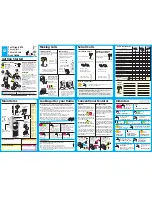
Features
E1 Spread Spectrum Radios
2-3
duplexer and are then transmitted out through the antenna system.
The opposite terminal’s antenna system receives the microwave signals and passed on to the multiplexer, LNA,
downconverter, filter, dual conversion and the IDU. In the IDU, it passes through the QPSK demodulator to
recover the microwave frame signal. This frame signal is then processed through demultiplexer to recover the
N number of E1 signal and other service signal.
The monitor unit of the equipment is controlled by the CPU (central processing unit) to function as: monitoring,
controlling, dispatching, alarming, processing and signaling etc. Based on the statistical result of BER test in
the multiplexer, we have 10
-3
BER, 10
-6
BER and frame loss signals.
Digital service adopts the Analog rule of 64kbps and PCM (Pulse Code Modulation) for service relay, complete
address selection and full address function. Simulating transfer completes the multiple categorized public
affairs connection. The dialing mode adopts DTMF system.
System network management uses PC machine of Intel Pentium II and above operating system.
Under Microsoft Windows environment’s using Telnet software, it is possible to relay between equipment,
collect all the equipment’s status in the network and select records for printing.
Содержание E1
Страница 1: ...1 ...
Страница 26: ...Product Description E1 Spread Spectrum Radios 4 10 Figure 4 12 Data Port Settings 4 ...
















































